Objectives / Rules
- Replace every cross with a slanted line.
- The clues tell you how many slanted lines point towards the clue.
- Loops are not allowed.
See the Walkthrough or Advanced Techniques below for extra tips and tricks, and the extra note for the Loop Rule below.
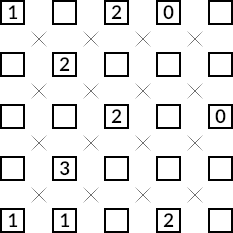
What are the numbers for?
These show how many slanted lines meet at each point.
Click or move your mouse over the puzzle to see the answer.
These show how many slanted lines meet at each point.
Click or move your mouse over the puzzle to see the answer.
Loop Rule
Loops are not allowed.
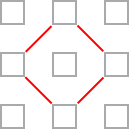
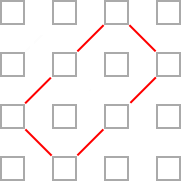
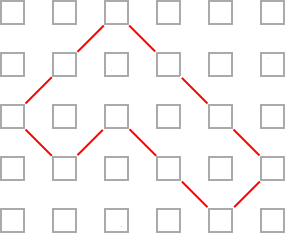
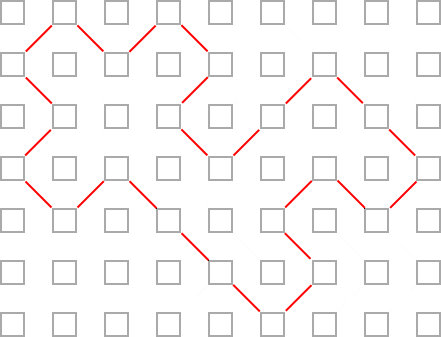
Walkthrough

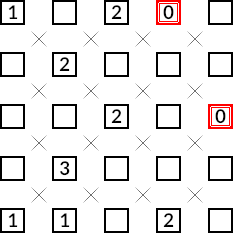
Step 2
Any 0 clue must have slanted lines that do not point towards the clue. You can then click the clues to indicate you've completed them.
Any 0 clue must have slanted lines that do not point towards the clue. You can then click the clues to indicate you've completed them.
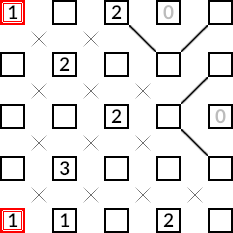
Step 3
1 clues in a corner can only be completed in one way.
1 clues in a corner can only be completed in one way.
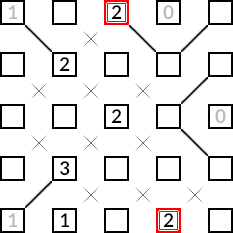
Step 4
2 clues along an edge can only be completed one way.
2 clues along an edge can only be completed one way.
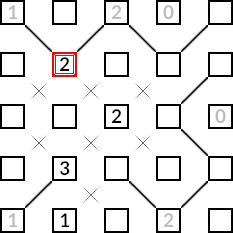
Step 5
This 2 clue is now complete, so the other two slanted lines can't point towards the 2.
This 2 clue is now complete, so the other two slanted lines can't point towards the 2.
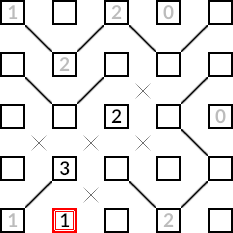
Step 6
This 1 clue can only be completed in one way.
This 1 clue can only be completed in one way.
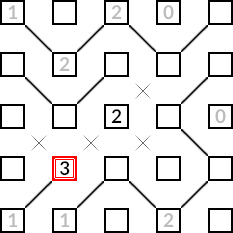
Step 7
This 3 clue can only be completed in one way, by having the 2 slants point towards it.
This 3 clue can only be completed in one way, by having the 2 slants point towards it.
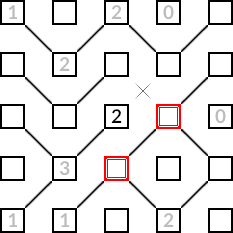
Step 8
Since loops aren't allowed the slant between these two squares can't go this way.
Since loops aren't allowed the slant between these two squares can't go this way.
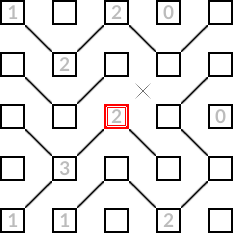
Step 9
This 2 clue is complete so the remaining slant can only go one way and the puzzle completes.
This 2 clue is complete so the remaining slant can only go one way and the puzzle completes.
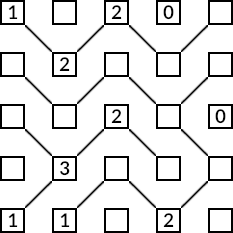
Step 10
The completed puzzle.
The completed puzzle.
Advanced Techniques
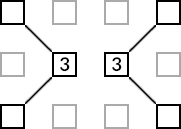
Whenever you see two 3 clues in this configuration (or vertically), you know that the slants go this way.
Why: we cannot have two slants pointing to one 3 clue and away from the other. This means that exactly one slant points to one, and another slant points to the other. Therefore the other slants must go this way.
Why: we cannot have two slants pointing to one 3 clue and away from the other. This means that exactly one slant points to one, and another slant points to the other. Therefore the other slants must go this way.
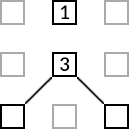
Whenever you see a 1 clue along an edge and a 3 in this configuration (or along the other edges), you know that the slants go this way.
Why: one slant points towards the 1, and the other points towards the 3, therefore the other two slants must go this way.
Why: one slant points towards the 1, and the other points towards the 3, therefore the other two slants must go this way.
Note: BrainBashers has a Dark Mode option. For BrainBashers, I'd recommend not using your browser's built-in dark mode, or any dark mode extensions (sometimes you can add an exception for a specific website).